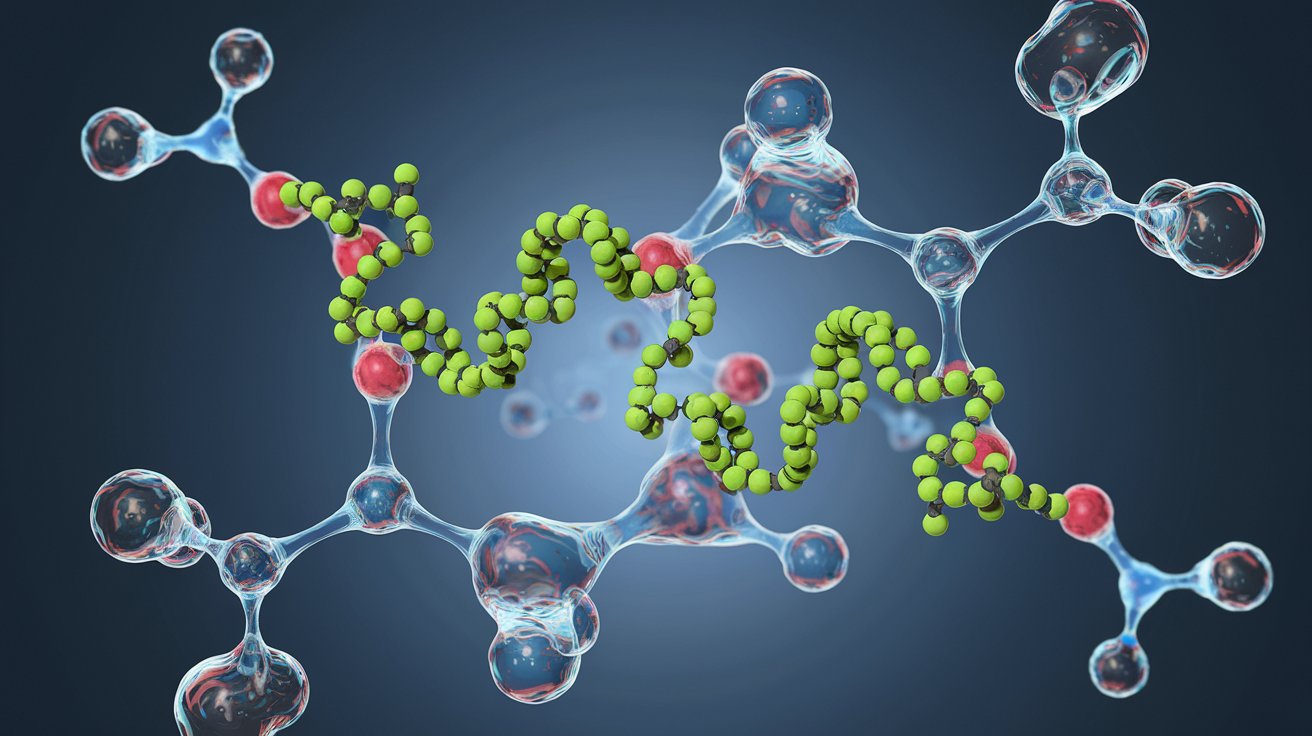
Glucagon-Like Peptide 1 (GLP-1) is a hormone that plays a crucial role in regulating blood sugar levels. Produced in the intestines, it helps control appetite, insulin secretion, and even the rate at which food leaves the stomach. This hormone has gained attention for its potential in treating type 2 diabetes and obesity. GLP-1 mimics, or drugs that imitate its effects, are now widely used to help manage these conditions. But there's more to this tiny hormone than meets the eye. From its discovery to its impact on modern medicine, here are 35 facts that will give you a deeper understanding of GLP-1.
Key Takeaways:
- GLP-1 is a hormone that helps control blood sugar, aids in weight loss, and benefits heart and brain health. It's like a superhero hormone with multiple powers for our body's well-being!
- GLP-1 has potential for treating diabetes, obesity, heart disease, and even brain conditions like Alzheimer's. Scientists are excited about its future possibilities in improving our health.
What is Glucagon-Like Peptide 1 (GLP-1)?
Glucagon-Like Peptide 1 (GLP-1) is a hormone that plays a crucial role in regulating blood sugar levels. It is part of the incretin family, which helps stimulate insulin secretion in response to meals. Let's dive into some fascinating facts about GLP-1.
- GLP-1 is produced in the intestines, specifically by the L-cells in the ileum and colon.
- It is released into the bloodstream after eating, helping to lower blood sugar levels.
- GLP-1 enhances insulin secretion from the pancreas, which is essential for glucose metabolism.
- It also inhibits glucagon release, a hormone that raises blood sugar levels.
- GLP-1 slows down gastric emptying, making you feel full longer after meals.
GLP-1 and Diabetes Management
GLP-1 has become a significant focus in diabetes research and treatment. Its ability to regulate blood sugar makes it a valuable tool for managing diabetes.
- GLP-1 receptor agonists are a class of medications used to treat type 2 diabetes.
- These medications mimic the effects of natural GLP-1, helping to control blood sugar levels.
- They can also promote weight loss, which is beneficial for many people with type 2 diabetes.
- GLP-1 receptor agonists have been shown to reduce the risk of cardiovascular events in diabetic patients.
- Some common GLP-1 receptor agonists include exenatide, liraglutide, and dulaglutide.
GLP-1 and Weight Management
Beyond diabetes, GLP-1 plays a role in weight management due to its effects on appetite and satiety.
- GLP-1 helps reduce appetite by acting on the brain's hunger centers.
- It increases feelings of fullness, leading to reduced calorie intake.
- GLP-1 receptor agonists are sometimes prescribed for weight loss in obese individuals without diabetes.
- Studies have shown that GLP-1 can lead to significant weight loss over time.
- Weight loss from GLP-1 therapy is often accompanied by improvements in blood pressure and cholesterol levels.
GLP-1 and Cardiovascular Health
GLP-1's benefits extend to heart health, making it a multifaceted hormone with various positive effects.
- GLP-1 has been shown to improve endothelial function, which is vital for blood vessel health.
- It can reduce inflammation, a key factor in cardiovascular disease.
- GLP-1 helps lower blood pressure, contributing to overall heart health.
- It may reduce the risk of heart attacks and strokes in people with diabetes.
- GLP-1 receptor agonists have been associated with a lower risk of heart failure.
GLP-1 in the Brain
GLP-1 isn't just about blood sugar and weight; it also has intriguing effects on the brain.
- GLP-1 receptors are found in several brain regions, including the hypothalamus and brainstem.
- It plays a role in regulating appetite and food intake through these brain regions.
- GLP-1 may have neuroprotective effects, potentially benefiting conditions like Alzheimer's disease.
- Research suggests that GLP-1 can enhance learning and memory.
- GLP-1 receptor agonists are being studied for their potential to treat neurodegenerative diseases.
GLP-1 and Gut Health
The gut is where GLP-1 is produced, and it has several important functions in this area.
- GLP-1 promotes the growth of intestinal cells, aiding in gut health.
- It helps maintain the integrity of the gut lining, preventing leaky gut syndrome.
- GLP-1 can reduce gut inflammation, which is beneficial for conditions like Crohn's disease.
- It plays a role in the gut-brain axis, influencing mood and mental health.
- GLP-1 may help regulate gut microbiota, promoting a healthy balance of bacteria.
Future Directions for GLP-1 Research
The potential of GLP-1 continues to be explored, with exciting possibilities on the horizon.
- Researchers are investigating new GLP-1 receptor agonists with improved efficacy and fewer side effects.
- There is interest in combining GLP-1 therapy with other treatments for synergistic effects.
- GLP-1's role in cancer prevention and treatment is an emerging area of study.
- Scientists are exploring the use of GLP-1 in treating metabolic disorders beyond diabetes.
- The potential for GLP-1 to improve mental health and cognitive function is a promising field of research.
The Power of GLP-1
Glucagon-Like Peptide 1 (GLP-1) plays a crucial role in regulating blood sugar levels and appetite. This hormone, produced in the gut, helps stimulate insulin secretion, inhibit glucagon release, and slow gastric emptying. These actions collectively help maintain glucose homeostasis and promote satiety, making GLP-1 a key player in diabetes management and weight control.
GLP-1 receptor agonists, like exenatide and liraglutide, have become essential treatments for type 2 diabetes and obesity. They mimic the effects of natural GLP-1, offering significant benefits for patients struggling with these conditions.
Understanding GLP-1's functions and therapeutic potential can lead to better management of metabolic disorders. By harnessing the power of this hormone, medical professionals can improve patient outcomes and enhance quality of life. Keep these facts in mind as you explore the fascinating world of GLP-1 and its impact on health.
Frequently Asked Questions
Was this page helpful?
Our commitment to delivering trustworthy and engaging content is at the heart of what we do. Each fact on our site is contributed by real users like you, bringing a wealth of diverse insights and information. To ensure the highest standards of accuracy and reliability, our dedicated editors meticulously review each submission. This process guarantees that the facts we share are not only fascinating but also credible. Trust in our commitment to quality and authenticity as you explore and learn with us.


